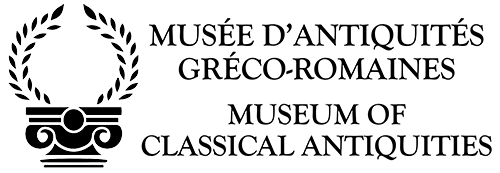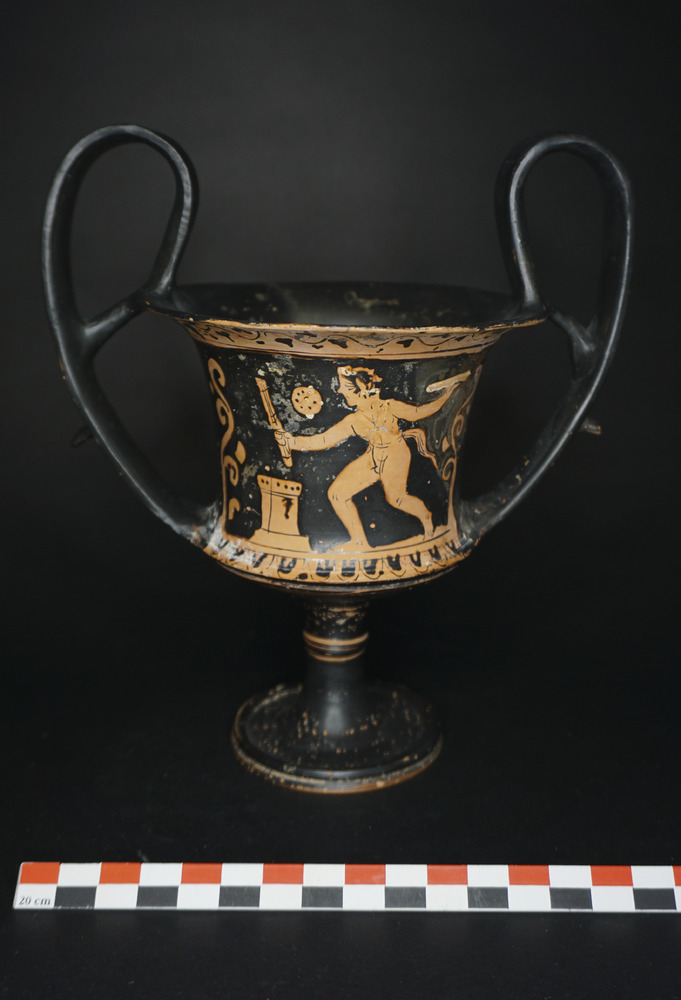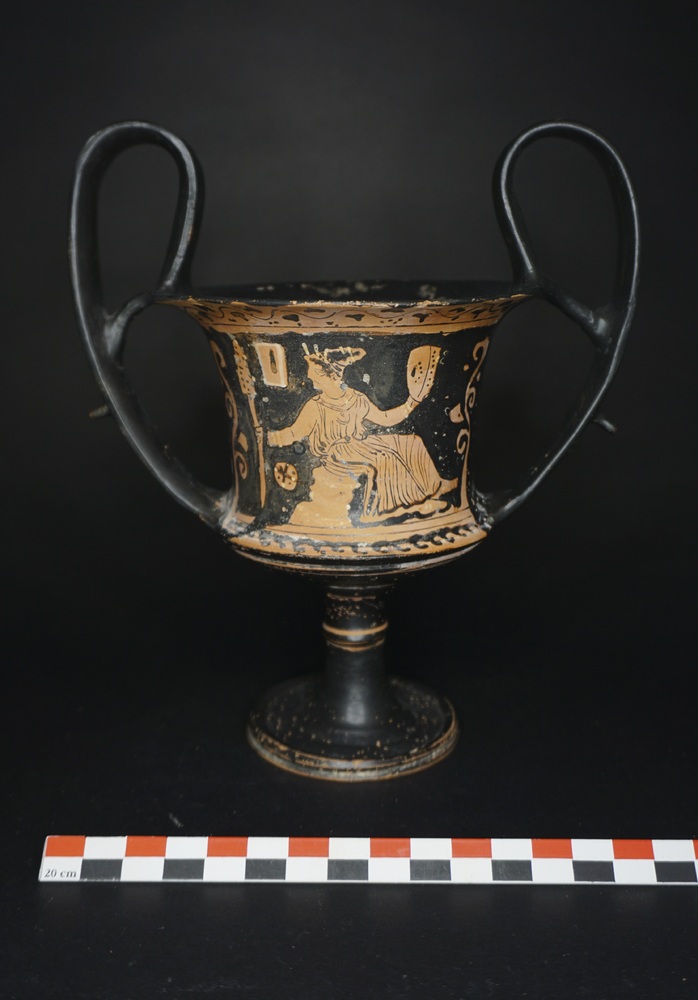The Birth of Dionysus
This South Italian red-figure kantharos was used for drinking wine as well as for rituals and offerings. Kantharoi were often linked to Dionysus, the Greek god of wine. The vessel depicts scenes associated with the cult of Dionysus (also known as Bacchus in Roman mythology). One side depicts a seated maenad holding a tambourine and a thyrsus, while the other side depicts a satyr approaching an altar, holding an offering dish and a torch. All of these elements are symbols of Dionysus.
Dionysus is a nature god associated with winemaking, harvest, vegetation, fertility, and ecstasy. In Book 2 of The Metamorphoses, Ovid details the strange circumstances surrounding the god’s birth.
Dionysus’ mother Semele was a mortal and his father was the god Zeus. When Zeus’ wife Hera found out that her husband had gotten another woman pregnant, she became jealous and appeared to Semele, befriended her, and convinced her to ask Zeus to show himself to her in his true godly form. However, seeing Zeus in his true form caused her to combust! In an attempt to save the unborn Dionysus, Zeus then sewed him into his own leg and he was born again a few days later. The name Dionysus means twice-born in reference to this event!
Author: Valentina Donato


